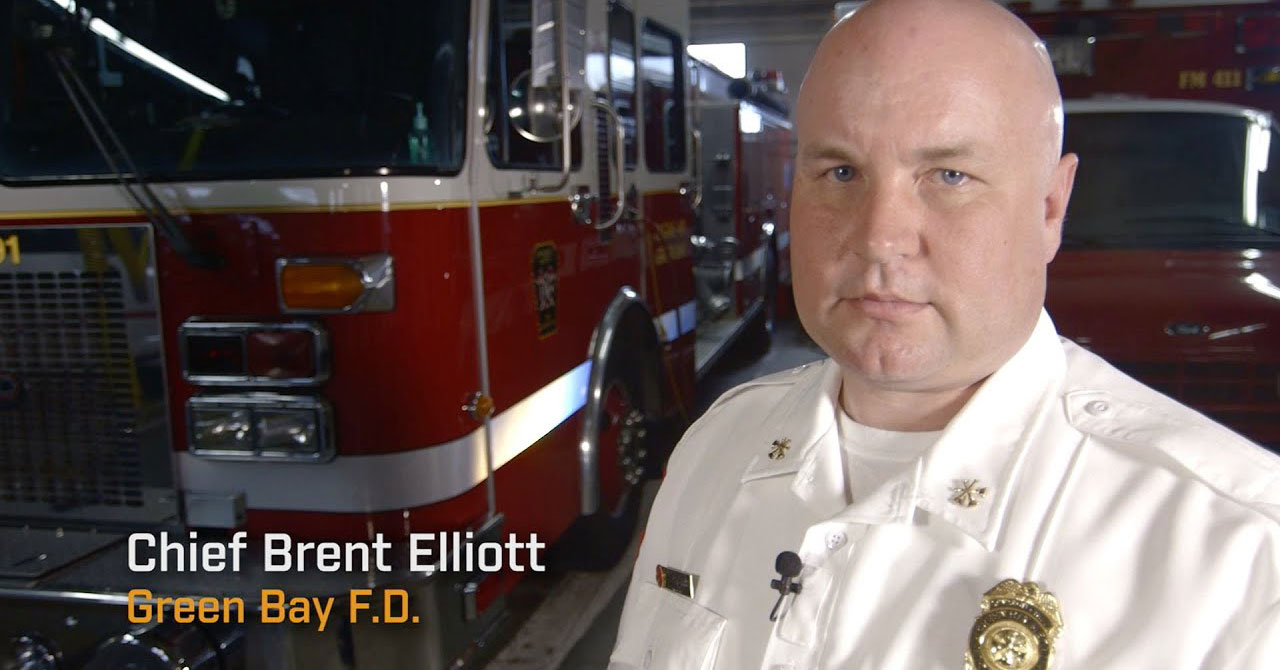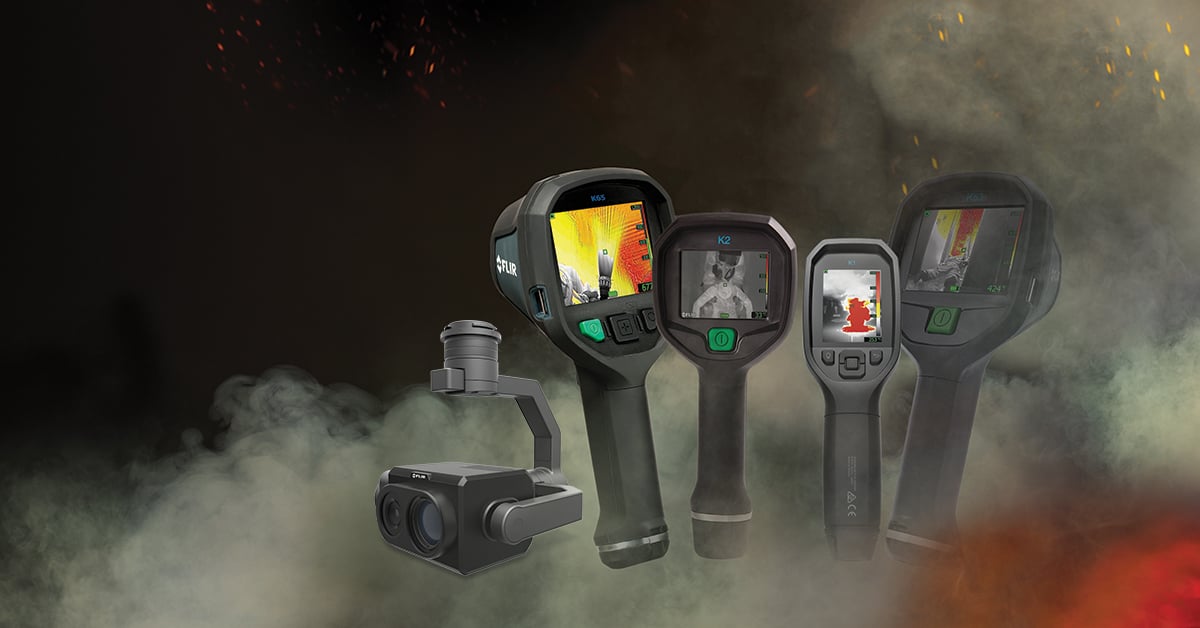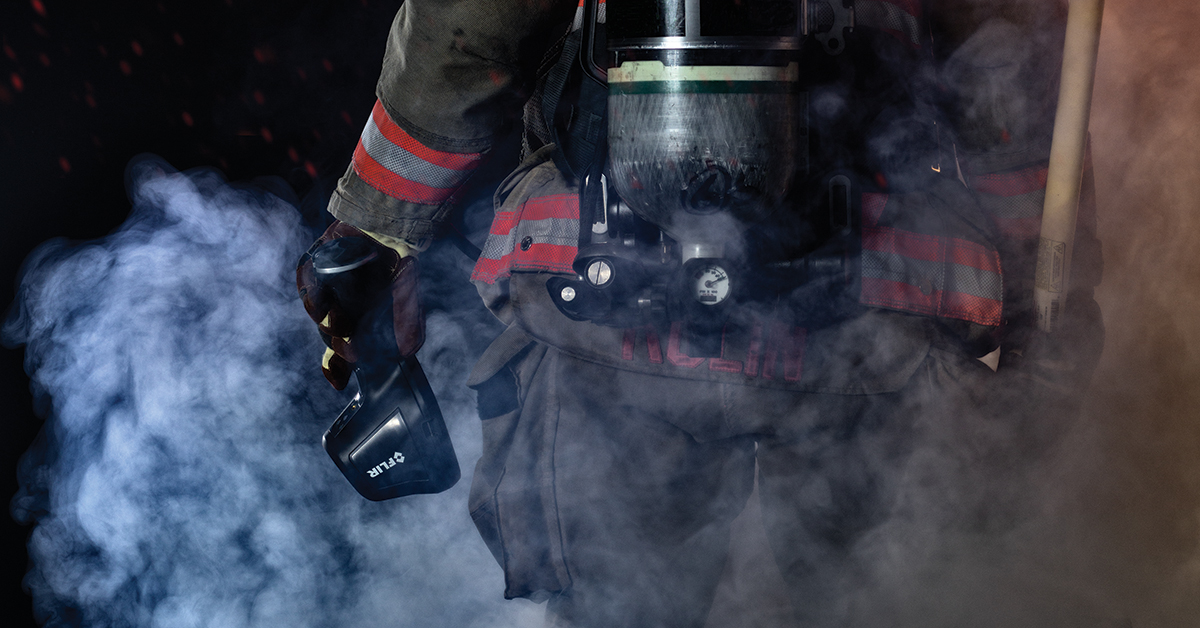Three Key Technologies for Effective Industrial Fire Prevention and Suppression
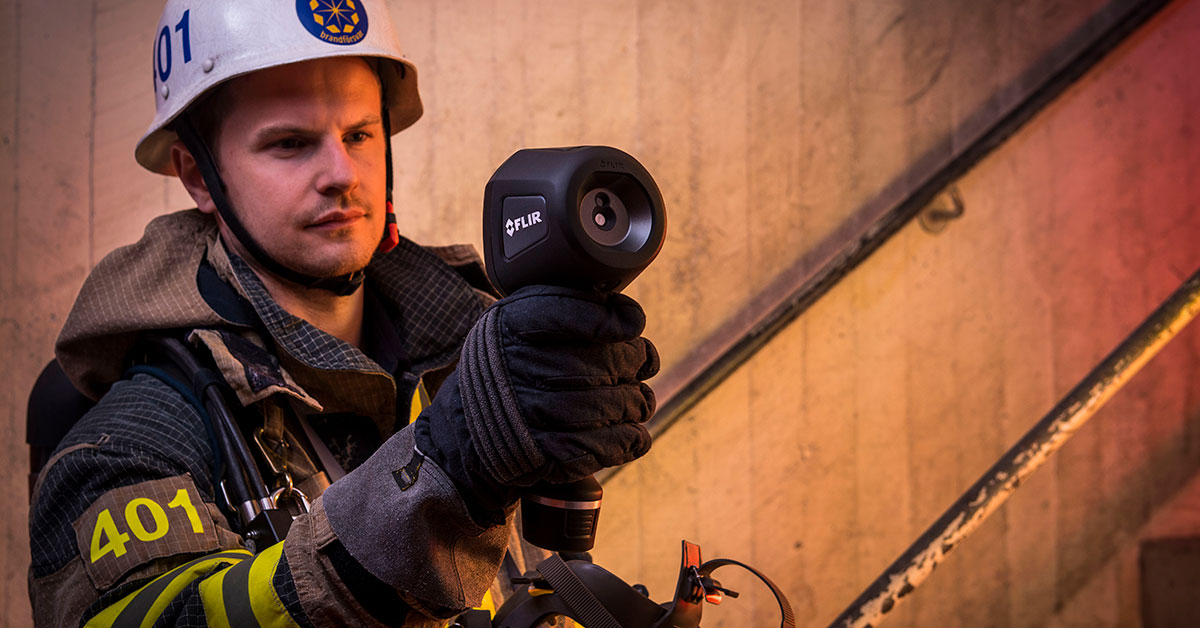
Build a Comprehensive Industrial Fire Prevention Program with Surveillance Thermal Cameras and Sensors, Thermal UAS Payloads, and Handheld Thermal Devices
Industrial environments present a myriad number of dangerous scenarios that aren’t found in traditional residential or even commercial structures. Often covering large areas, these spaces may include multiple environment types—from warehouses to offshore oil well pads—and may be exposed to variety of hazardous chemicals and gasses like methane and ammonia. Taken together, these scenarios present a complex and dangerous environment for emergency response personnel and the employees who run these facilities.
Outlined below are three key technologies industrial organizations and related fire personnel can adopt to create more effective and safer fire prevention and suppression programs.
Preventing Fires with Condition Monitoring Thermal Sensors
Before a fire scenario presents itself, industrial organizations can take proactive steps to create always-on condition monitoring programs through the installation of IoT thermal imaging devices capable of detecting anomalous heat signatures before flames or smoke appear.
Fitting within the palm of a hand, the FLIR AX8 is a fixed-mounted condition monitoring thermal imaging camera that is compact and easy to install. It provides 24/7 surveillance, ideal for monitoring electrical cabinets, process facilities, manufacturing equipment, data centers, energy generation, energy distribution, shipping, mass transit, storage facilities, refrigeration warehouses, and other potentially hazardous industrial equipment and environments.
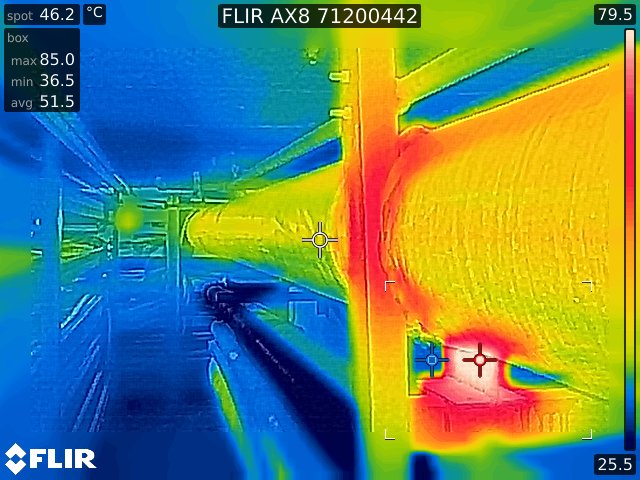
For covering large areas, fixed-mounted thermal imaging cameras attached to poles or walls can also provide live video and video analytics to automatically detect potentially dangerous conditions. Devices can be programed to send automatic alerts whenever a temperature threshold is hit, or if noxious gasses are detected beyond acceptable operating levels. Alerts can be sent to staff located in control rooms, or even sent directly to emergency response teams.
These smart smoke alarms leverage thermal imaging and/or gas-sniffing technology that can sense danger before a situation becomes a full-blown incident. Fires detected in the incipient stage can often be addressed before a larger problem develops and without the need for protective clothing or breathing apparatus.
In the oil and gas industry, monitoring gas storage tanks with surveillance fixed-mount and pan-tilt-zoom (PTZ) thermal imaging cameras can also prevent a fire or other catastrophe. Thermal imaging cameras can detect the storage level of tanks, spot leaks, and even detect gas buildup above the material, which could preclude a potentially explosive fire event. Teledyne FLIR partner CleanConnect.ai has created an automated software kit that provides automatic condition monitoring of large industrial gas storage facilities.
Assessing the Scene with Eyes in the Sky
In scenarios that do become full-fledged incidents, unmanned ariel systems can play a valuable role in assessing the scene. A proverbial “eye in the sky,” UAS equipped with multiple sensor types and payloads can quickly assess and provide crucial intelligence to incident commanders via a combination of drone-mounted gas sniffers, thermal imaging devices, and visible cameras.
Most crucially, drones provide incident commanders with information about where fire or noxious gasses are concentrated, through UAS payloads like the FLIR MUVE C360. Furthermore, drones equipped with the FLIR Duo Pro R, which features both a visible and thermal camera, can provide incident commanders with real time information when a hot zone becomes too hot, enabling them to direct personnel to a safer location or to better engage the incident, especially rapidly moving and developing incidents.
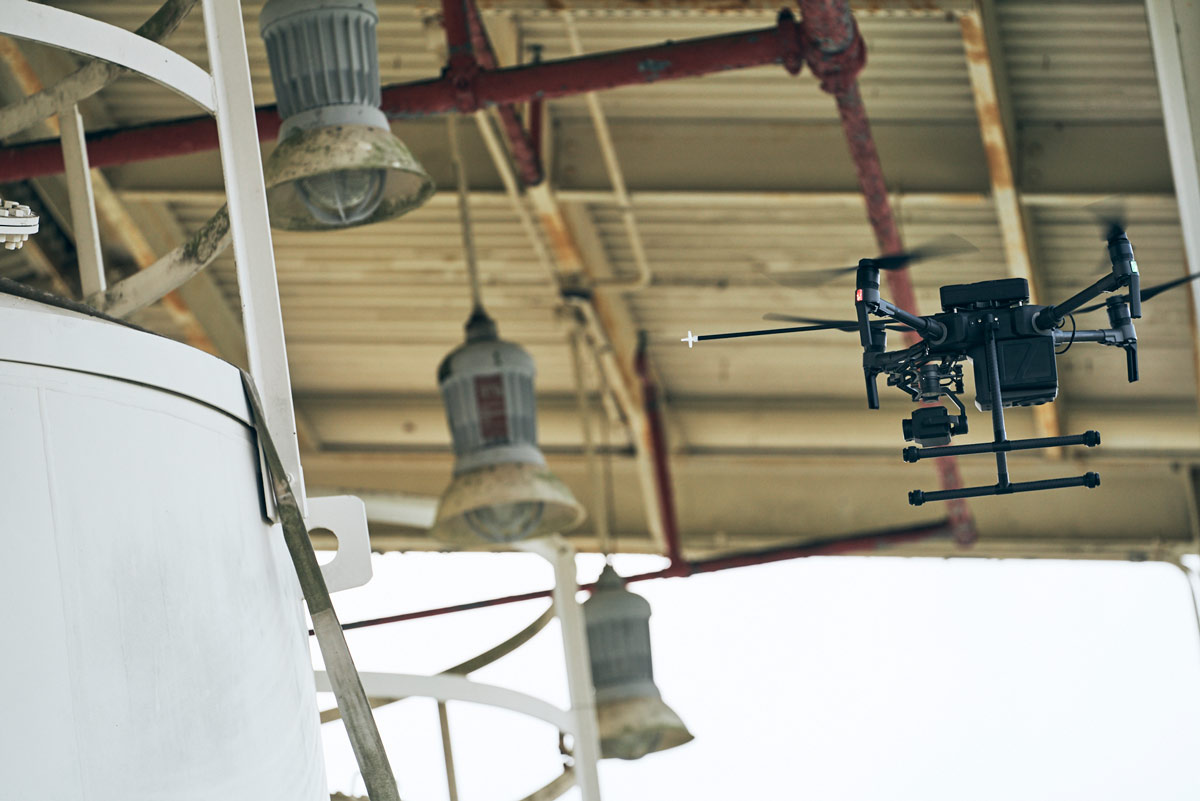
For structure fires in particular, drones offer a detailed view of the roof, which is often the hardest part of a structure to assess from the ground. Knowing where heat is concentrated and where that heat is moving provides valuable intelligence. Whether a residential fire or an industrial incident, firefighters may be required to cut holes in the roof to vent heat. Drones can show which parts of a roof are safe or not for personnel, while also helping to pinpoint where those holes should be strategically created as part of the broader fire suppression mission.
Extending Personnel Vision Beyond Human Limits
For personnel on the ground, handheld thermal imaging cameras (TICs) like the FLIR K-Series provide crucial situation awareness, enabling personnel to see through smoke and make quick decisions in the moment. Within a building, TICs can also help steer firefighters clear of areas that are too hot for rated PPE equipment, all in real time. That added awareness can be the difference between life or death for victims and personnel, all the while improving the effectiveness of the crew responding to the incident.
Ground personnel can also use thermal imagers to predict what structures or materials are about to catch fire near the primary incident. Certain types of liquid or chemical fires can burn extremely hot, placing the integrity of a structure or even nearby buildings at great risk. Here, a thermal imaging camera can examine the exterior of a nearby building to see if it needs cooling to help slow or stop the spread of a fire.
Even if there aren’t visible flames, handheld TICs can show whether the environment is too hot for firefighters to enter, particularly for certain types of chemical burns where material may not emit flames but give off a tremendous amount of heat. Meanwhile, for navigating tight spaces in a structure, including examining doorways, thermal imaging cameras can provide warning signs to personnel who might be otherwise be unaware of dangerous heat nearby before it’s too late to seek safety.
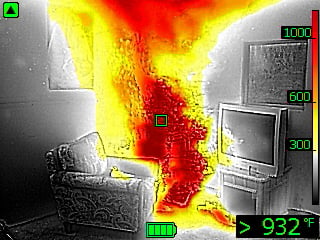
Thanks to declining size, weight, and cost of fire-rated thermal imaging equipment, along with improved sensor resolution and ergonomic device design with intuitive software, fire departments can now more readily afford to equip each person on the squad with personal thermal imaging cameras at price points of just $599 USD per device, such as the FLIR K1, which weighs just 680 grams and is rated to survive extreme fire conditions.
Firefighters can carry lightweight handheld devices as part of their standard equipment to aid in rescue operations and to evaluate situations quickly. For incident commanders, more advanced handheld devices with greater resolution and features can be had for a few thousand U.S. dollars, such as the FLIR K45.
Be Prepared with Effective Training and the Right Equipment
The use of thermal equipment for fire suppression and prevention does require some training, especially drones, which require a license to operate. Teledyne FLIR and its distribution partners produce training videos and literature for fire prevention condition monitoring, from drone payload operation to basic handheld thermal camera tips.
All Teledyne FLIR equipment undergoes extensive testing to ensure its durability in the harshest environments in the world. FLIR handheld imagers are IP67 rated, which means they are completely submersible and can handle drops of up to two meters in almost any conditions.
Teledyne FLIR Provides the Tools at Every Step of Fire Prevention
In a perfect world, automated, IoT condition monitoring tools could detect and prevent every incident, but that’s not always possible. However, the combination of monitoring tools to detect incidents early, and drones and handheld technology deployed on-scene to address an incident, empower firefighters with the knowledge and resources necessary to tackle the incident and keep themselves safe.
To learn more about how Teledyne FLIR fire prevention and suppression technology works to protect lives and livehoods, visit https://www.flir.com/discover/instruments/early-fire-detection/
